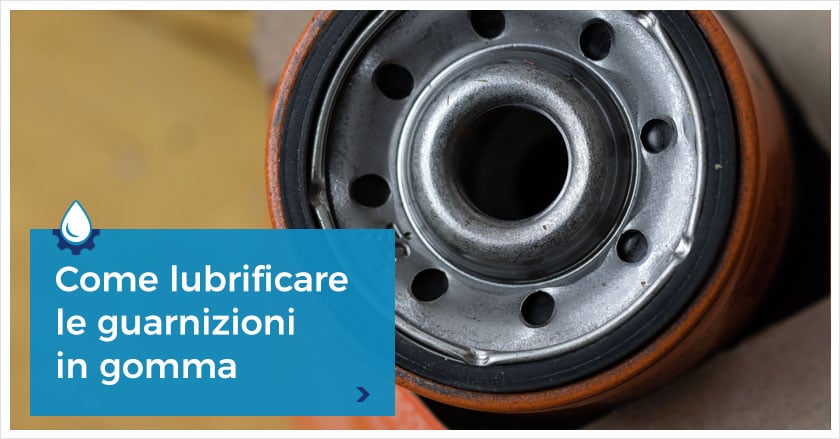
How to lubricate rubber seals
Assembly is often underestimated as a possible cause of damage to mechanical components.
In fact, it is a crucial moment for the future seal of your machinery, as the use of an unsuitable lubricant during industrial assembly can really reduce the functionality and life of the component itself.
Do you want to easily assemble your rubber components? Are you looking for a lubricant that avoids the risk of the sealing rings of your project being damaged during assembly on the shaft?
Choosing the correct lubricant for your needs is a very important choice for your business, so it is essential to have a clear understanding of your needs and to intervene accordingly with the most suitable solution: one that does not leave a trace, is odourless, colourless, biodegradable, approved for food contact and so on.
The lubricant for industrial assembly
In order for the lubricant to be functional for industrial assembly, it must obviously reduce the coefficient of friction without however favouring the misalignment or expulsion of the gasket in operation.
The 3 fundamental characteristics are thus:
- Facilitate insertion
- Evaporate from the point of friction
- Leave a residue that can hold the seal in place
This lubrication technology can be in aqueous or gel form and is even suitable for the assembly of rubber and plastic components. What's more, it is not dangerous in the event of accidental contact with food (f*********************************************************************************---ood-grade).
Once the industrial assembly is complete, it is important that the lubricant dries completely (or to use proper jargon, "evaporates"), so that the treated part can return to its original state. If this does not happen, the main reason is usually the wrong choice of lubricant or the poor quality of the product. It would inadvertently favour the expulsion of the seal in operation, with multiple structural and consequently economic damages.
Industrial assembly and dynamic operation
The lubricant serves not only for industrial assembly operations but also afterwards, as in the case of a gasket of a pneumatic cylinder of a valve. For this reason, it is important that the lubricant has all the right characteristics so that its function are preserved over time in the working conditions of the component with:
- Sliding speed of friction surfaces
- Surface pressures between sealing ring and sliding tube
- Working temperature range
If your gasket must perform a separation function in dynamic operation, the lubricant you need should not be limited exclusively to improving the assembly and increasing the life of the component but must also increase the sealing effect of the gasket itself.
A detailed study of the project and the right combination of the elements ensure the formation of a homogeneous film capable of filling the depressions present on the friction surfaces, reducing the residual escape space of the intercepted fluid contained in the separation chambers.
For more information on how the ideal lubricant for industrial assembly should be, download the free product sheet in our Ghost Emulsion Series!



